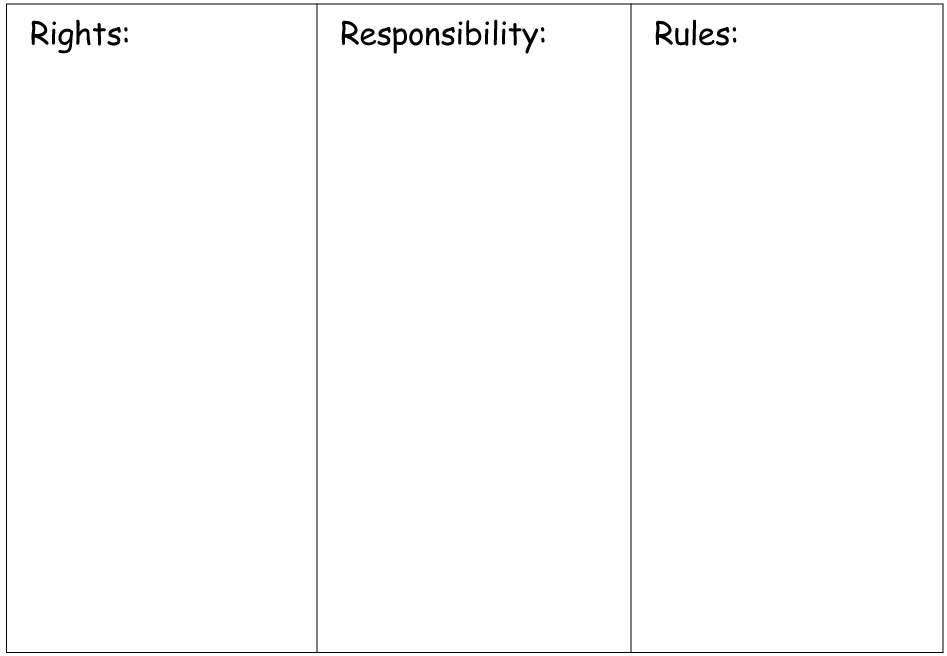Procedure:
- The class is divided into groups of 4–5 students. Each group selects a speaker.
- Each group receives a sheet of paper (A2 or A3), which they divide into three equal parts. In the upper part, the rights are listed which, in the students‘ estimation, should apply to all students, the instructor included. Each proposal is given a number.

- The students then pass on their work to another group.
- Each group discusses the previous group’s list and considers the answers to the following questions: which responsibilities or duties do we have so that the referenced rights in the upper area are indeed respected? What do we have to do? How do we have to conduct ourselves?
Example: “Every person has the right to be heard.” – “Therefore, we have the responsibility or duty, to listen.” - In the middle field or column they now write the corresponding responsibilities or duties. In each case, they also list the number from above which corresponds to the entry.
- Instructor input: responsibilities require rules. This can be illustrated by ways of the already known classroom rules or school regulations. These should be formulated in a positive way (“Do this” rather than “Don’t do that”), they must be specific and describe the desired behavior.
Example of the right to be heard: we have the responsibility to listen; as a rule it would read: remain silent when others speak. - The students pass on their paper to another group. The groups study all entries of the previous two groups and agree on at most five rules. These will then be written in the third field or column.
- The speakers of the groups explain their agreed-upon rules to the entire class. In cross-comparisons the students discuss whether there are repetitions and overlaps of rules. Then they agree in a democratic fashion as to what should be deleted or summarized.
- Voting on the rules. Each student receives four tokens or adhesive points. S/he can assign them to the rule(s) which in his/her opinion should be applicable to the classroom. The students may assign their points in any way they wish (assign all the points to one rule or separately to 2, 3 or 4 rules). The class will adopt those four rules which received the most votes. The rules will be written on a poster, signed by all students, and placed in a highly visible location in the classroom.






